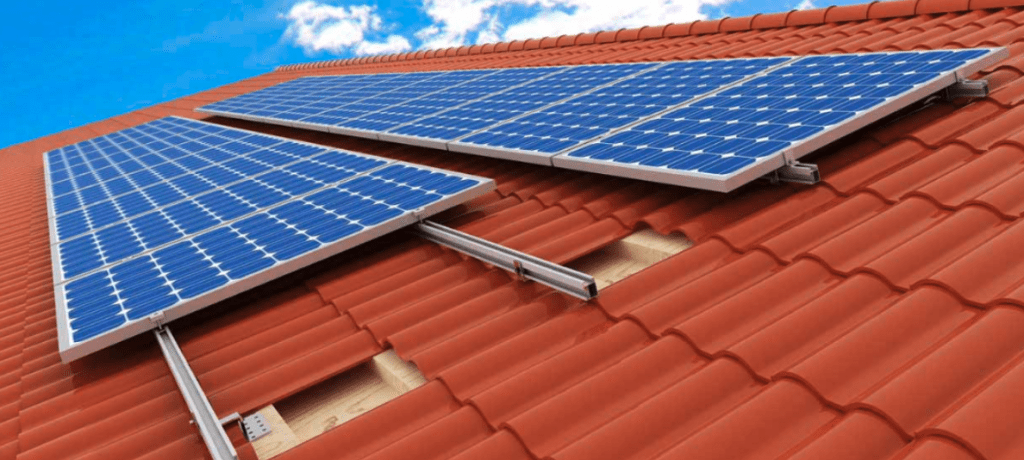When mounting a solar panel system to the roof of a home, a solar panel mounting frame is used to secure the solar panels to your roof.
A Solar panel mounting frame is generally referred to an array frame because an array of solar panels is mounted to the solar panel mounting frame,
When installing a solar system, the first step is to install the array
The mounting frame is installed first and is connected to the house’s roof frame and then the solar panels are fastened to the mounting frame.
The industry standard is to use two aluminium and stainless steel parts.
Mounting systems usually come with a 10-year warranty but it’s always good to check on that with your solar installer.
When applying for an STC Government Rebate, one of the requirements is for the solar mounting system used in the installation conforms to relevant Australian standards.
The Two Main Types of Solar Panel Mounting Frames
The two main families for solar mounting frames are:
- Flat Mounted
- Tilted Array
A flat mounted solar system is when the panels are laid flat on the roof so they end up being mounted at the same angle on inclination as the roof.
A tilted array is generally used when solar panels are mounted on a flat roof. This is so the panels can be mounted at their ideal angle (eg 30 degree for Sydney).
There are a couple of downsides with a tilted array.
- Tilted Arrays Cost More: When considering a tilted array rather than a flat mounted array, sometimes it is more cost effective mounting more solar panels with sub optimal inclination and orientation angles rather than mounting less solar panels facing north at the perfect angle, but costing more overall to install.
- Council Approval: Some councils around Australia need council approval so be aware of this
- Space Efficiency: This is an interesting one. Space efficiency is how much roof space your solar system takes up. Or how many Watts of solar panels can you squeeze onto a roof. Intuitively, you would think that mount two rows of panels at the perfect angle would be more space efficient than laying the panels flat. However solar panels angled at 30 degrees cast a shadow. This is especially important in Winter. You need to leave enough space between rows to allow for the sun at its lowest angle at the winter solstice. it is almost true every time that it is more space efficienty and energy efficient to mount more panels flat rather than rows of less panels tilted.
Array Frame Roof Types
Array frames come in different types to enable the mounting of a solar system on various roof types such as:
- Corrugated Iron Roof
- Tiled Roof
- Trim Dek Tin Roof
- Klip Lok Roof
There are variations on the array frames listed above and there are some non-penetrating solutions which are sutied to particular roof types.
Ground mounted solar systems and larger installations such as solar farms also have a particular suite of mounting frames types some of which have seasonal tilting and some that track the sun – meaning the panels face east in the morning and follow the sun all day so they are always extracting the most they can from the available sunshine.
The downside of tracking is that it introduces moving parts into what is otherwise a static solar array.

Solar Mounting Array Frame
Some of the better known solar mounting systems available are:
